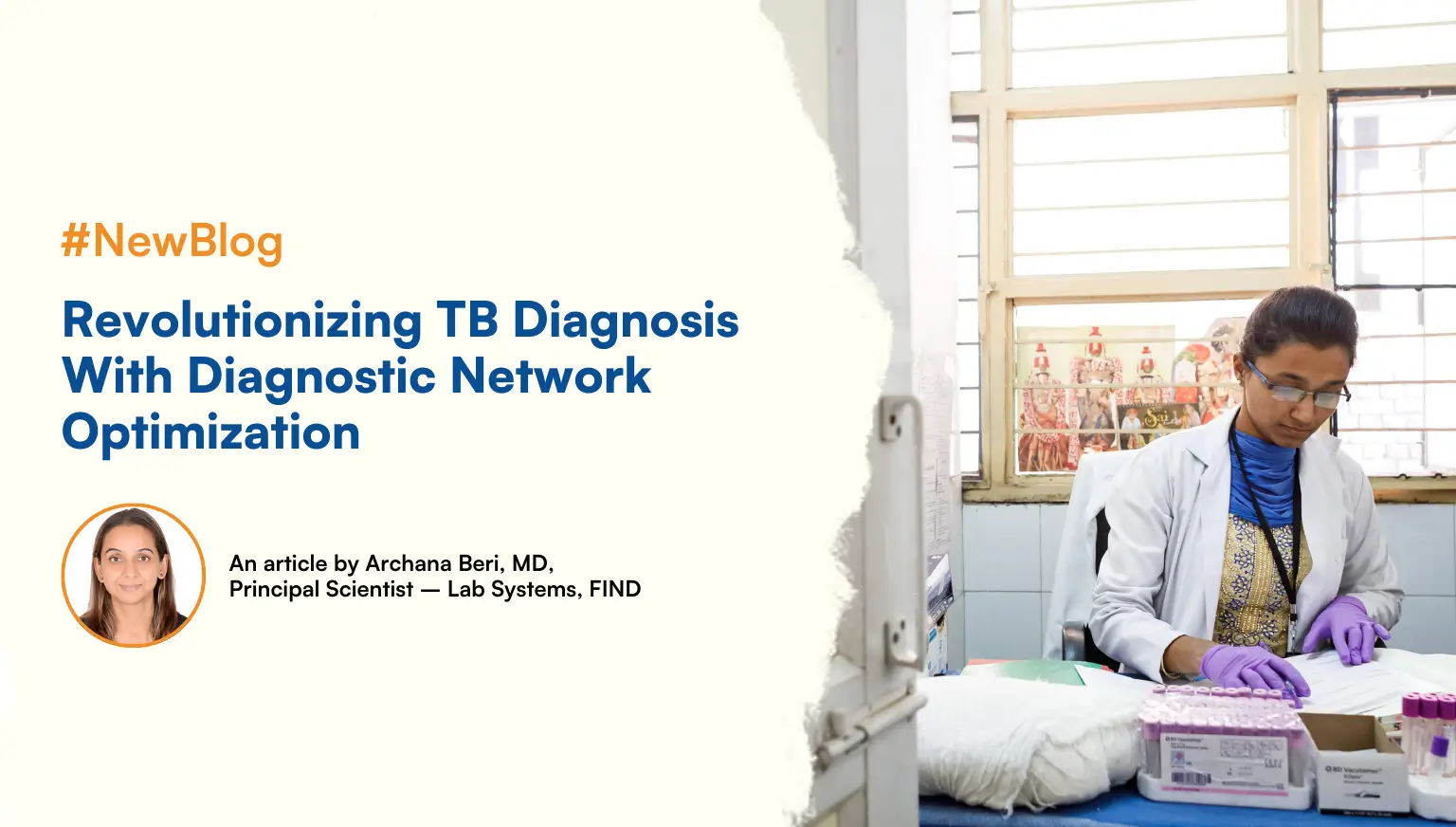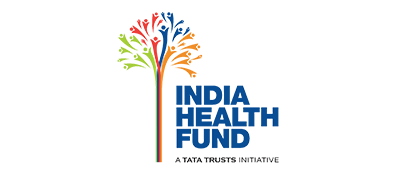
Tuberculosis (TB), a major global health threat, has remained at the forefront of public health challenges due to its high morbidity and mortality rates worldwide. Particularly prevalent in low- and middle-income countries, TB’s impact is exacerbated by social and economic factors that hinder effective disease management and control. Despite significant strides in medical science that have improved diagnostic and treatment options, TB continues to claim lives due to systemic challenges in healthcare systems. The advent of Diagnostic Network Optimization (DNO) offers a beacon of hope, promising to transform TB diagnosis through enhanced effectiveness and efficiency of diagnostic services. DNO is a geospatial analytics approach that supports visualization of current (“as-is”) diagnostic networks and creates various scenarios to achieve an optimized (“ideal”) network presenting trade-offs to choose from. By integrating data-driven strategies to optimize the deployment and utilization of diagnostic resources, DNO is poised to make a profound impact on TB control efforts globally.
The Urgent Need for Enhanced TB Diagnostics
Current diagnostic methods for TB are hindered by a combination of factors, including limited accessibility, high costs, and variable accuracy, which collectively contribute to substantial diagnostic gaps. Smear microscopy, the standard diagnostic method in many settings, often fails to detect less active forms of TB and is unable to determine drug resistance, which is crucial for guiding treatment. These limitations are particularly critical in the context of rising TB drug resistance worldwide, making the need for accurate and rapid diagnostics more pressing. Advanced molecular diagnostics, such as Xpert MTB/RIF, offer a solution with their higher sensitivity and rapid detection capabilities. However, their deployment is not widespread, often restricted by the high costs and infrastructural requirements that are not feasible in many regions hardest hit by TB.
The 2022 Global TB Report by the World Health Organization (WHO) underlines the severe implications of these diagnostic gaps. It reported that millions remain untreated and unreported within the health systems, with an estimated 4.1 million people with TB going undiagnosed or not reported in 2021, highlighting the urgent need for enhanced diagnostic strategies (World Health Organization).
The Power of Molecular Diagnostics
Molecular diagnostics revolutionize TB control by providing rapid, accurate detection of both TB and drug-resistant strains, essential for appropriate treatment. The WHO has emphasized the need for broader access to these technologies, setting targets for universal access to rapid molecular diagnostics by 2025. However, in 2021, only a third of all diagnosed TB cases utilized these advanced methods at the point of initial diagnosis, showcasing a significant gap in the deployment of these life-saving technologies (Pai and Swaminathan). DNO can play a critical role in cost effective planning for the scale-up of molecular diagnostics to meet current and future diagnostic needs aligned with the Sustainable Development Goals (SDG) of ending the TB epidemic by 2030.
Tuberculosis (TB), a major global health threat, has remained at the forefront of public health challenges due to its high morbidity and mortality rates worldwide. Particularly prevalent in low- and middle-income countries, TB’s impact is exacerbated by social and economic factors that hinder effective disease management and control. Despite significant strides in medical science that have improved diagnostic and treatment options, TB continues to claim lives due to systemic challenges in healthcare systems. The advent of Diagnostic Network Optimization (DNO) offers a beacon of hope, promising to transform TB diagnosis through enhanced effectiveness and efficiency of diagnostic services. DNO is a geospatial analytics approach that supports visualization of current (“as-is”) diagnostic networks and creates various scenarios to achieve an optimized (“ideal”) network presenting trade-offs to choose from. By integrating data-driven strategies to optimize the deployment and utilization of diagnostic resources, DNO is poised to make a profound impact on TB control efforts globally.
The Urgent Need for Enhanced TB Diagnostics
Current diagnostic methods for TB are hindered by a combination of factors, including limited accessibility, high costs, and variable accuracy, which collectively contribute to substantial diagnostic gaps. Smear microscopy, the standard diagnostic method in many settings, often fails to detect less active forms of TB and is unable to determine drug resistance, which is crucial for guiding treatment. These limitations are particularly critical in the context of rising TB drug resistance worldwide, making the need for accurate and rapid diagnostics more pressing. Advanced molecular diagnostics, such as Xpert MTB/RIF, offer a solution with their higher sensitivity and rapid detection capabilities. However, their deployment is not widespread, often restricted by the high costs and infrastructural requirements that are not feasible in many regions hardest hit by TB.
The 2022 Global TB Report by the World Health Organization (WHO) underlines the severe implications of these diagnostic gaps. It reported that millions remain untreated and unreported within the health systems, with an estimated 4.1 million people with TB going undiagnosed or not reported in 2021, highlighting the urgent need for enhanced diagnostic strategies (World Health Organization).
The Power of Molecular Diagnostics
Molecular diagnostics revolutionize TB control by providing rapid, accurate detection of both TB and drug-resistant strains, essential for appropriate treatment. The WHO has emphasized the need for broader access to these technologies, setting targets for universal access to rapid molecular diagnostics by 2025. However, in 2021, only a third of all diagnosed TB cases utilized these advanced methods at the point of initial diagnosis, showcasing a significant gap in the deployment of these life-saving technologies (Pai and Swaminathan). DNO can play a critical role in cost effective planning for the scale-up of molecular diagnostics to meet current and future diagnostic needs aligned with the Sustainable Development Goals (SDG) of ending the TB epidemic by 2030.
Tuberculosis (TB), a major global health threat, has remained at the forefront of public health challenges due to its high morbidity and mortality rates worldwide. Particularly prevalent in low- and middle-income countries, TB’s impact is exacerbated by social and economic factors that hinder effective disease management and control. Despite significant strides in medical science that have improved diagnostic and treatment options, TB continues to claim lives due to systemic challenges in healthcare systems. The advent of Diagnostic Network Optimization (DNO) offers a beacon of hope, promising to transform TB diagnosis through enhanced effectiveness and efficiency of diagnostic services. DNO is a geospatial analytics approach that supports visualization of current (“as-is”) diagnostic networks and creates various scenarios to achieve an optimized (“ideal”) network presenting trade-offs to choose from. By integrating data-driven strategies to optimize the deployment and utilization of diagnostic resources, DNO is poised to make a profound impact on TB control efforts globally.
The Urgent Need for Enhanced TB Diagnostics
Current diagnostic methods for TB are hindered by a combination of factors, including limited accessibility, high costs, and variable accuracy, which collectively contribute to substantial diagnostic gaps. Smear microscopy, the standard diagnostic method in many settings, often fails to detect less active forms of TB and is unable to determine drug resistance, which is crucial for guiding treatment. These limitations are particularly critical in the context of rising TB drug resistance worldwide, making the need for accurate and rapid diagnostics more pressing. Advanced molecular diagnostics, such as Xpert MTB/RIF, offer a solution with their higher sensitivity and rapid detection capabilities. However, their deployment is not widespread, often restricted by the high costs and infrastructural requirements that are not feasible in many regions hardest hit by TB.
The 2022 Global TB Report by the World Health Organization (WHO) underlines the severe implications of these diagnostic gaps. It reported that millions remain untreated and unreported within the health systems, with an estimated 4.1 million people with TB going undiagnosed or not reported in 2021, highlighting the urgent need for enhanced diagnostic strategies (World Health Organization).
The Power of Molecular Diagnostics
Molecular diagnostics revolutionize TB control by providing rapid, accurate detection of both TB and drug-resistant strains, essential for appropriate treatment. The WHO has emphasized the need for broader access to these technologies, setting targets for universal access to rapid molecular diagnostics by 2025. However, in 2021, only a third of all diagnosed TB cases utilized these advanced methods at the point of initial diagnosis, showcasing a significant gap in the deployment of these life-saving technologies (Pai and Swaminathan). DNO can play a critical role in cost effective planning for the scale-up of molecular diagnostics to meet current and future diagnostic needs aligned with the Sustainable Development Goals (SDG) of ending the TB epidemic by 2030.
